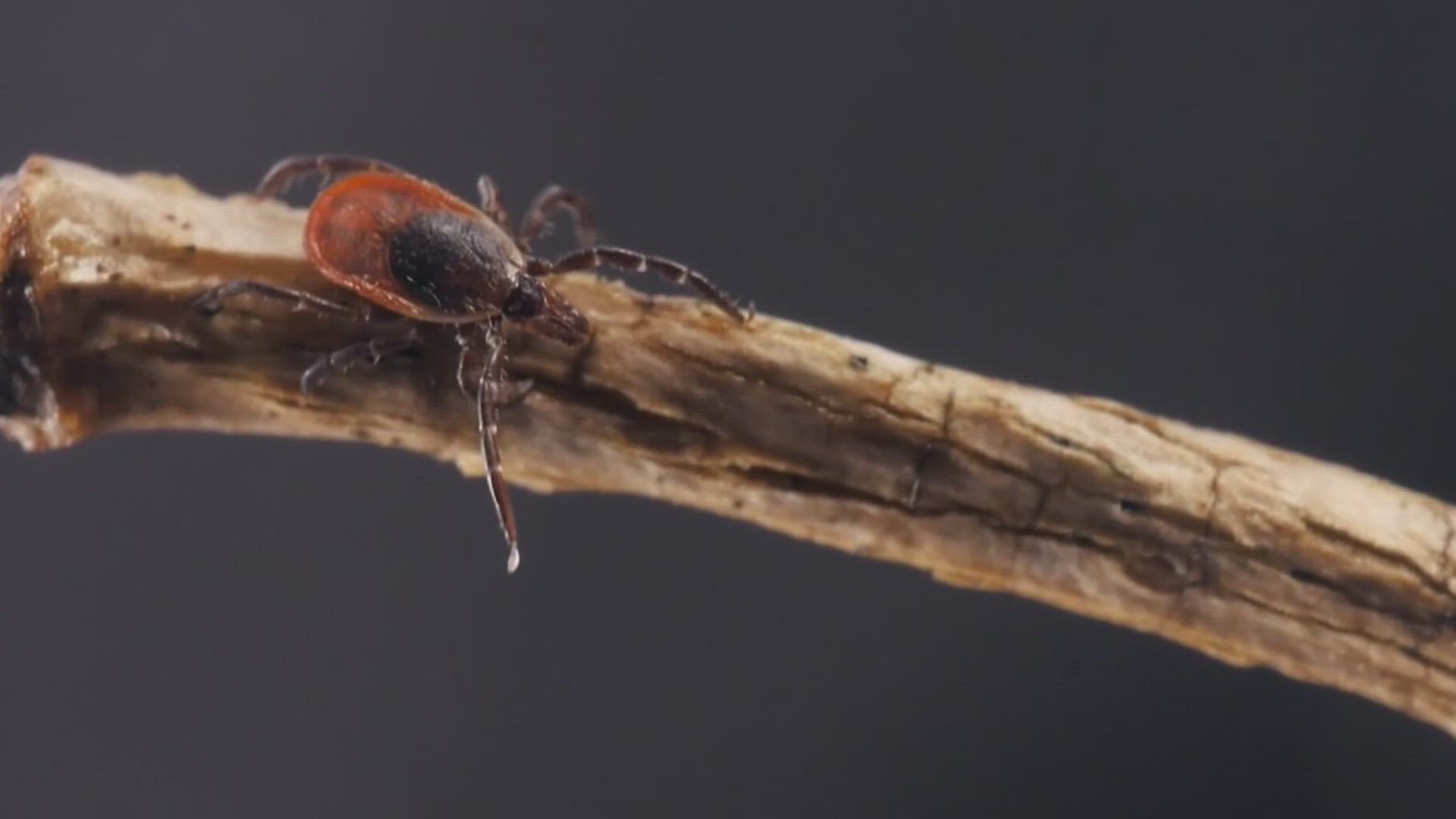NORTH YARMOUTH, Maine — Warmer-than-normal temperatures this winter have already brought ticks carrying diseases out of winter dormancy.
The University of Maine Tick Lab said while recent heavy snow and ice made a dent in tick activity, it won't slow the number of deer ticks expanding into new areas of the state.
Several inches of snow cover isn't slowing down Jon Cole.
Cole, who owns Northwoods Tick Control and is a Lyme disease survivor, places metal "tick boxes" between a wooded area and a customer's yard.
"We know that the mice are going to visit the box whether there is snow or no snow," Jon quipped.
The tick boxes contain bait that attracts white-footed field mice, chipmunks, and other rodents, which carry carry deer ticks that can spread Lyme and other diseases. As the rodent moves through the box, a wick containing a low dose of the same chemical used in tick-control products for cats and dogs coats its backside. Ticks that attach die after exposure to the insecticide without harming the rodents.
"You are front-lining the chipmunks and the mice in your yard; fewer ticks on them mean few ticks on you," Cole explained.
Tick box technology was developed by the U.S. Centers for Disease Control and Prevention as a way to fight ticks without spraying pesticides.
Griffin Dill, the Tick Lab coordinator at the University of Maine, said unseasonably warm temperatures resulted in more ticks becoming active earlier this winter. He said the past weekend's storm that pounded Maine with snow and ice won't slow them down much.
"We don't anticipate those colder temperatures and snow cover to have any impact on the ticks themselves," Dill said.
The lab has received 150 deer ticks submitted by the public since January. On average, up to 40 percent of those samples carry the pathogens that cause Lyme disease.
Tick-borne illness is emerging as an even more significant health concern in 2024, as Maine comes off a record number of confirmed Lyme disease cases in 2023.
In May, UMaine researchers will use weather stations and infrared cameras to track ticks and the pathogens they carry in different habitats throughout the state. It will help them track emerging species like the longhorn tick and lone star tick to determine when they arrive permanently, according to Dill.
As our winters get warmer, the survival rate of ticks carrying diseases is increasing. So experts suggest you wear protective clothing and use an EPA-registered repellent, and always perform tick checks after being outdoors.
For more information on Lyme disease and tick-borne illnesses, including disease tracking data in real-time from the Maine CDC, click here.

